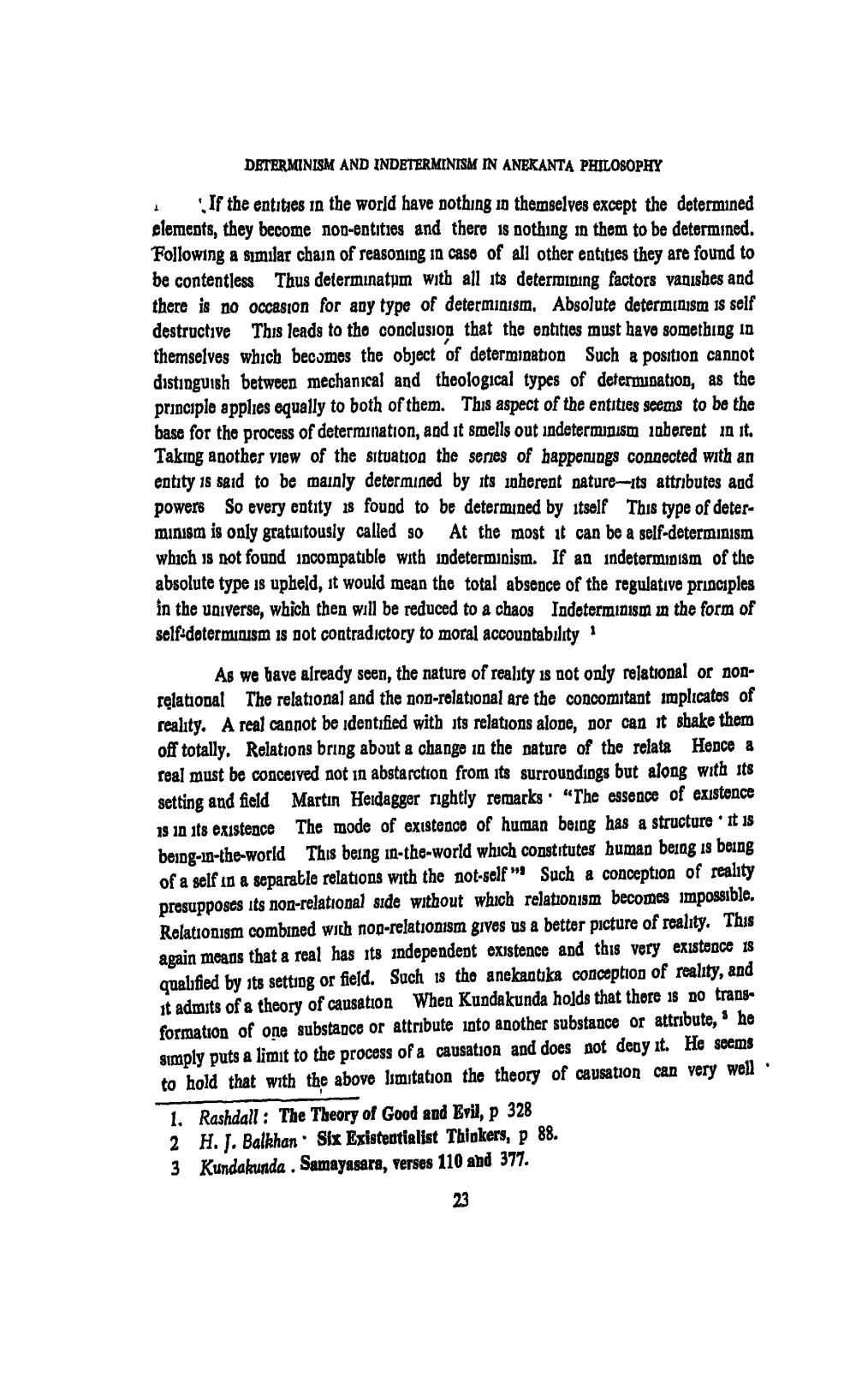________________
DETERMINISM AND INDETERMINISM IN ANEKANTA PHILOSOPHY
i If the entities in the world have nothing in themselves except the determined elements, they become non-entities and there is nothing in them to be determined. Following a similar chain of reasoning in case of all other entities they are found to be contentless Thus determinatum with all its determining factors vapishes and there is no occasion for any type of determinism. Absolute determinism is self destructive This leads to the conclusion that the entities must have something 10 themselves which becomes the object of determination Such a position cannot distinguish between mechanical and theological types of determination, as the principle applies equally to both of them. This aspect of the entities seems to be the base for the process of determination, and it smells out indeterminism inberent in it. Taking another view of the situation the series of happenings connected with an entity is said to be mainly determined by its inherent nature-its attributes and powers So every entity is found to be determined by itself This type of determinism is only gratuitously called so At the most it can be a self-determinism which is not found incompatible with indeterminism. If an indeterminism of the absolute type is upheld, it would mean the total absence of the regulative principles in the universe, which then will be reduced to a chaos Indeterminism in the form of self-determinism is not contradictory to moral accountability 1
As we have already seen, the nature of reality is not only relational or nonrelational The relational and the non-relational are the concomitant implicates of reality. A real cannot be identified with its relations alone, nor can it shake them off totally. Relations bring about a change in the nature of the relata Hence a real must be conceived not in abstarction from its surroundings but along with its setting and field Martin Herdagger rightly remarks · "The essence of existence 19 in its existence The mode of existence of human being has a structure. It is being-in-the-world This being in-the-world which constitutes human being is being of a self in a separat le relations with the not-self " Such a conception of reality presupposes its non-relational side without which relationism becomes impossible. Relationism combined with non-relationism gives us a better picture of reality. This again means that a real has its independent existence and this very existence is qualified by its setting or field. Such is the anekantika conception of reality, and it admits of a theory of causation When Kundakunda holds that there is no transformation of one substance or attribute into another substance or attribute, he simply puts a limit to the process of a causation and does not deny it. He seems to hold that with the above Ismitation the theory of causation can very well
1. Rashdall: The Theory of Good and Evil, p 328 2 H. J. Balkhan. Six Existentialist Thinkers, p 88. 3 Kundakunda . Samayasara, verses 110 and 377.
23




